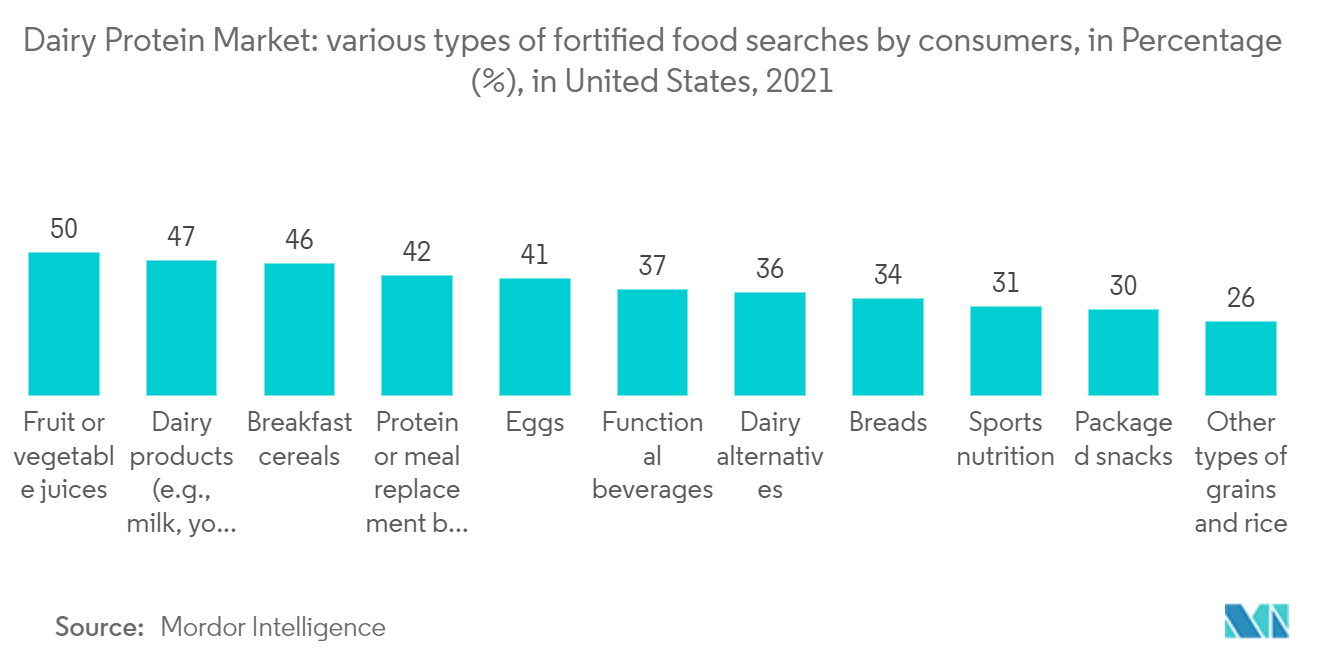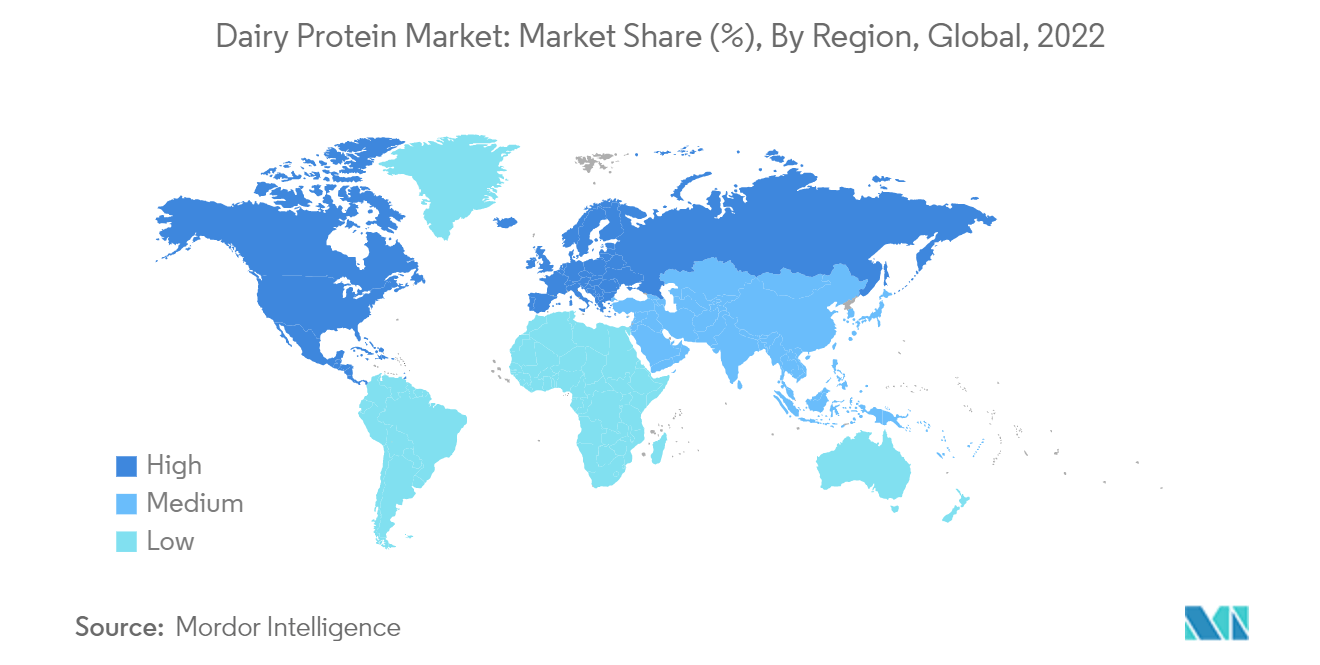Market Trends of Dairy Protein Industry
Growing Awareness Towards Healthy Food
- The dairy protein industry is experiencing a surge in popularity due to its ability to assist consumers in achieving the benefits of higher-protein diets, including satiety, weight management, and muscle health.
- Several factors are driving the growth of the industry, such as increased awareness of health and well-being, the rising prevalence of lifestyle diseases and obesity, and the growing number of health-conscious consumers. Additionally, the senior population, which is rapidly increasing globally, is seeking to combat healthcare costs and age-related muscle loss, further fueling the demand for dairy protein products.
- Moreover, the trend towards urbanization and the increased participation of women in the labor force may lead to a reduction in breastfeeding rates, which could result in a shift in focus towards infant formula as a source of essential nutrition for babies.
- Milk protein concentrate, which is a critical component of infant formula, is expected to significantly contribute to the growth of the dairy protein ingredients market. The growing middle-class population in emerging and developing countries is creating new opportunities in the infant nutrition market, as the need for products that can accommodate the schedules of working mothers is on the rise.
- The market is expected to experience a boost from the increasing approvals by the United States Food and Drug Administration (US FDA) and product launches by key players. For instance, in September 2021, Lactalis Ingredients introduced Prolacta 80, a soluble protein concentrate that is extracted and concentrated directly from milk. Its high protein content, particularly alpha-lactalbumin, which is also the primary protein in breast milk, makes it an ideal ingredient for infant formula. Therefore, these factors, including growing health-conscious consumers and the increasing need for nutritious infant formulas, are expected to drive the growth of the dairy protein market.

Europe holds the Major Share in Dairy Protein Market
- Europe currently holds the largest market share in the global dairy protein market and is the primary market for this sector. North America follows Europe, holding the second-largest market share. Meanwhile, Asia-Pacific is the fastest-growing market due to its large population and the surging demand for sports nutrition and functional beverages in the region. Developing countries in South America and Asia present the most attractive markets, as the younger population in these regions extensively consumes whey protein as dietary supplements and for bodybuilding.
- Dairy products such as yogurt and cheese are popular in European and Western markets. Yogurts infused with whey protein are witnessing enhanced demand worldwide due to their added health benefits, including improving digestion and restoring intestinal flora. Additionally, dairy proteins have excellent functional properties and high nutritional values. The dairy industry also significantly contributes to the world economy, particularly in the European Union (EU). According to the milk market observatory of the European Commission, the EU exported over 500,000 tons of whey powders in 2020. Moreover, whey protein demand in beverages is rising with the growing health awareness in the country. Products such as protein water and energy drinks are becoming a trend as consumers are choosing healthier options over carbonated beverages. As a result, companies are launching innovative products in this market segment. For instance, in 2021, EurialIngredients & Nutrition launched EuriNutriWPC, a whey protein concentrate ingredient with 80% protein content, prepared from sweet whey manufactured at the company's plant in France. These factors fuel the demand for dairy protein in processed and ready-to-eat (RTE) food products during the forecast period.
- Germany is another leading country in the market, driven by high protein consumption in the food and beverage industry. Cheese is the most fragmented category within packed food that has a larger consumption rate among German consumers. According to Food and Agriculture Organization Corporate Statistical Database (FAOSTAT), per capita cheese consumption in Germany was about 25.3 kilograms in 2021.
- The cheese market is driven by increased awareness of good sources of nutrients such as calcium, phosphorous, zinc, vitamin A, and vitamin B12, which are vital for building strong bones and certain high-quality proteins that provide essential building blocks for strong muscles. Therefore, cheese is considered one of the products that is rich in dairy protein. Whey protein isolate is a byproduct of the cheesemaking process that contains more protein than whey concentrate. Hence, the increase in cheese production drives the production of the dairy protein market in this region.
- Furthermore, whey protein concentrates (WPC), whey protein isolates (WPI), and dairy-derived whey have become ingredients of choice in manufacturing ready-to-drink protein shakes and high-protein meal replacements. For instance, according to the Office for National Statistics (UK), in 2021, the total sales value for protein concentrates manufactured in the United Kingdom surpassed 463 million British pounds.
- The high utilization of dairy protein, particularly by choice, due to increased consumer awareness of the health benefits associated with its consumption, is one of the key factors driving the dairy protein market in Europe.

